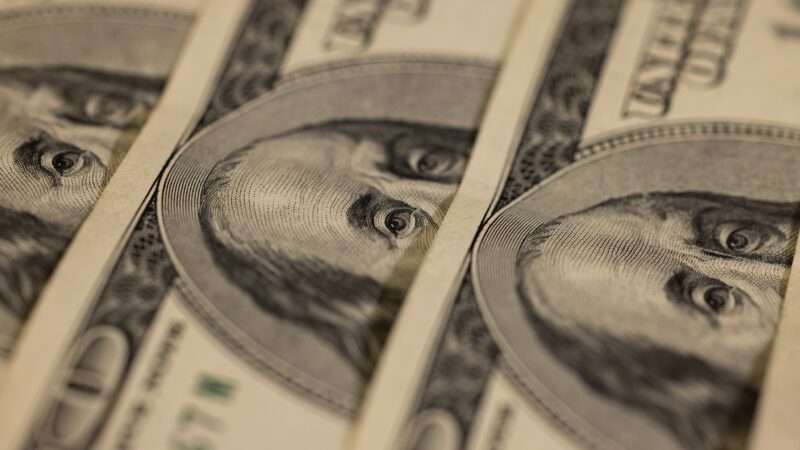
Stimulus spending played a "sizable role" in driving inflation to 40-year highs in the wake of the COVID-19 pandemic.
"We find that excess inflation is significantly correlated to each country's own domestic stimulus and to various exposures of foreign stimulus," concluded a trio of economists at the St. Louis Federal Reserve in a report published last month. In the U.S., they found that "fiscal stimulus during the pandemic contributed to an increase in inflation of about 2.6 percentage points."
That's a significant increase, even if it doesn't account for the full run-up of inflation that took place during the past 18 months. Price increases accelerated in late 2021 and throughout 2022, ultimately peaking at an annualized rate of 9.1 percent in June.
In the report, the three economists note that governments around the world responded to the COVID-19 pandemic by injecting large amounts of money into the economy via various mechanisms.
"The large increase in demand triggered by the fiscal stimulus policy, together with the slow pace of adjustment in production, likely contributed to the current imbalance in the goods market," they wrote. The increase in demand as the world was still recovering from the blow that the pandemic dealt to production facilities and supply chains—and the disconnect between supply and demand—naturally forced prices to climb.
"Fiscal stimulus did not have any noticeable association with industrial production movements," the three economists explain. "By stimulating demand without boosting supply, our results suggest that fiscal support contributed to increased excess demand pressures."
The most obvious form of fiscal stimulus in the U.S. was the three rounds of direct payments mailed to most American households during the pandemic. About $823 billion was distributed in that manner, according to the COVID Money Tracker run by the Committee for a Responsible Federal Budget, a nonprofit that advocates for lower deficits.
The first round of stimulus checks was worth $1,200 per person and was approved as part of the Coronavirus Aid, Relief, and Economic Security (CARES) Act in March 2020. Another round of $600 checks was distributed starting in December of that year. But the big blow came in early 2021, when the Biden administration pushed through a round of $1,400 checks as part of the American Rescue Plan, passed by Congress in March 2021. Households earning as much as $160,000 in joint income were eligible for the final round of direct payments disbursed during the first half of 2021—and many progressives in Congress thought the cutoff should have been even higher.
The new report also seems to validate the concerns of some economists—including Larry Summers, one of the Obama administration's top economic advisers, who warned that the American Rescue Plan "will set off inflationary pressures of a kind we have not seen in a generation."
After crunching the economic data from March 2020 through February 2022—a cut-off chosen to exclude any consequences from Russia's invasion of Ukraine, which pushed some prices higher—the three Federal Reserve economists say they found a "potentially sizable role that fiscal policy may have played in contributing to upward price pressures."
That's somewhat at odds with the traditional view of inflation, which views the phenomenon as a function of monetary policy rather than fiscal policy.
But they argue that the two issues can become intermingled when the fiscal policy is fueled by government debt—that is, when fiscal stimulus is financed with borrowing rather than tax increases—because the "newly issued government debt is only partially backed by future taxes."
Other recent reviews of COVID-era stimulus bills have come to a similar conclusion. In a paper published in September, economists at Johns Hopkins University and the Chicago Federal Reserve said "fiscal inflation" accounted for "approximately half" of the recent price increases.
That's troubling, they added, because "fiscal inflation tends to be highly
persistent…When inflation has a fiscal nature, monetary policy alone may not provide an effective response."
So far, the chief response to inflation has been a monetary one. The Federal Reserve has hiked interest rates—another hike in rates was approved this week—in an attempt to soak up the excess demand in the market. That seems to have tamed the soaring price increases seen in the first half of last year, but inflation is still running well ahead of the target annualized rate of 2 percent.
If fiscal policy contributed to higher prices, then it might require fiscal policy changes to bring them down as well.
Reckless borrowing and spending during the pandemic, it turns out, didn't only cause the national debt to hit new highs. It also likely contributed to higher prices everywhere else.
The post COVID Stimulus Spending Played 'Sizable Role' in Inflation appeared first on Reason.com.







